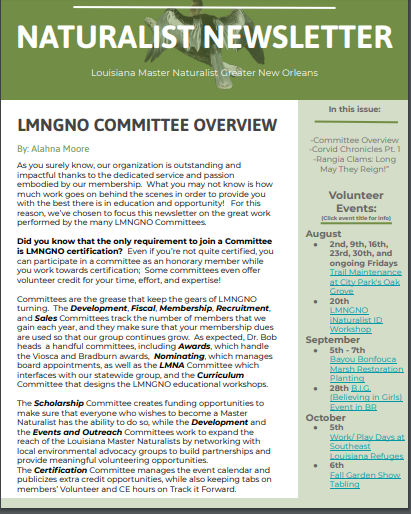

Volunteer management is everything that happens after you’ve successfully recruited a volunteer.
It consists of scheduling volunteers, training volunteers, and empowering and motivating volunteers to do their jobs well and further a nonprofit’s mission.
Worried about how much time it’ll take? There are a wide variety of software tools out there, many of which are free or inexpensive, that can come in handy for scheduling and keeping track of volunteers so that you don’t have to do it all manually.

No one knows better than you how state-mandated lockdowns and changing information about COVID-19 have forced nonprofits around the world to make concessions for their employees to work from home.
Plus, 81% of volunteers do it to make a difference in their community and to be social…so how do you recruit and manage volunteers at a time where everyone’s social lives are happening at a distance?
Here are some of our biggest recommendations for succeeding with volunteers at your side during and post-COVID:
While a lot of the guidance about volunteer management planning during COVID-19 translates to normal seasons too, there are a few other steps you can take to build a strong foundation for your volunteer management program.
These six steps for developing a strong volunteer management plan can help you get started whether you’re starting from scratch or you’re wanting to start fresh.
Setting goals is one of the first steps to any successful business and nonprofit venture. Your goal as a volunteer manager or coordinator is to come up with realistic, measurable goals for your volunteers and organization.
Another approach to developing your goals for your volunteer management plan is to start by asking your team questions about what you hope to accomplish with your volunteers. Questions like these can guide your discussion:
Once you have set the right goals for your volunteer management plan, the work of volunteer recruitment begins. There are tons of great resources and checklists that can offer a playbook to volunteer recruitment. Many of these guides cover similar approaches like knowing how you would like to use volunteers, how many volunteers you need, and what skills you need in your volunteers.
Where your organization can start recruiting smarter is by thinking like marketers and approaching volunteer recruitment the way innovative employers recruit their employees.
In the same way employers spend time creating personas to understand what motivates potential employees, their preferred work environment, their lifestyles, etc., volunteer managers should spend time doing the same. Then, they can write volunteer descriptions that speak to those profiles. Here’s a sample of a good volunteer description that explains the company mission, lists the responsibilities, explains the requirements, and clearly states how to apply:


© 2013 Indiana Nonprofit Resource Network, www.inrn.org
The profiles should also include information about where these target volunteers get information, spend time online, and research opportunities. This is where the marketer mindset comes into play. If you can determine which volunteers spend most of their time scrolling through social media or enjoy attending networking events, you can start recruiting them wherever they’re at.

Good training and education separate the well-organized nonprofit from the ad hoc nonprofit. Simply because, in order to provide good documentation and training to volunteers, an organization must have a process and system to teach.
To make volunteers feel welcome and prepared, develop training related to “housekeeping items”. Things like where to track hours, how to sign-up for shifts, and where to complete reports should be covered in a volunteer’s first couple of days of joining your nonprofit. While in-person training is common, there are now several online tools and document sharing services that make virtual training easy and effective.
Just as important as training, ongoing education related to your organization’s evolving leadership, goals, mission, and key events are vital to making volunteers feel involved and included. This education can come in the form of a monthly meeting or a volunteer newsletter like the one below from Louisiana Master Naturalist Greater New Orleans.

While “engagement” might bring to mind initiatives like volunteer appreciation events and regular meetings, it really means giving people the opportunity to engage with you, other volunteers, and the wider company.
One way to do that is by implementing regular feedback loops between volunteers and a coordinator or manager — which can also help volunteers feel heard. These opportunities for feedback don’t have to be incredibly formal. Depending on your nonprofit and your volunteers, you could do a quick call, an email, or even a quick survey.
No matter what method of engagement you choose, follow-up is key. If your volunteers are taking the time to engage with you, it’s important to recognize their work and be open about changes being made based on their recommendations.
And, of course, doing things like building a strong volunteer community that make it easy for volunteers to connect with each other goes a long way to keeping volunteers engaged and leads to retention and even referrals.
Communication should be the heartbeat of your nonprofit, especially for your volunteer management plan.
The good and bad news when it comes to modern communication is that there are so many channels to communicate with between email, phone calls, Facebook Messenger, Instagram direct messages, text messages, etc.
From the moment volunteer recruitment starts, there are plenty of tools out there that allow people to spread the word about new volunteer opportunities across every social platform, schedule automated emails with volunteer updates, and make video get-togethers easy.
And even better — many are free! Whichever way you choose to communicate, if you’re clear and consistent, volunteer management runs a lot more smoothly across the entire volunteer journey.
There are a lot of good resources that outline steps to creating a solid communication plan. Here are a few key items to consider as you communicate with your volunteers:
While it seems like a good volunteer management plan would speak for itself, it’s important to capture important metrics, so you can report success to your wider organization through a volunteer impact report and spot areas of improvement.
The goals you set should determine which metrics you should track like the response rates of volunteer managers for new volunteer inquiries, volunteer satisfaction rates, and retention rates.
So much of good reporting is making sure your data is clean and can be easily shared. Oftentimes, this means choosing the right volunteer management platform and making sure it’s supported with the right processes and people in place. Gone are the days of tracking things in Excel sheets where it’s easy to duplicate or lose data with all the manual work that goes into maintaining massive sheets. Now, the options for volunteer management software solutions are plentiful, even free.
Developing a volunteer management plan is a journey, and it looks different for every nonprofit, but we believe these tried-and-true steps can help any organization evolve its approach to volunteer management and enhance the experience of its volunteers and staff.